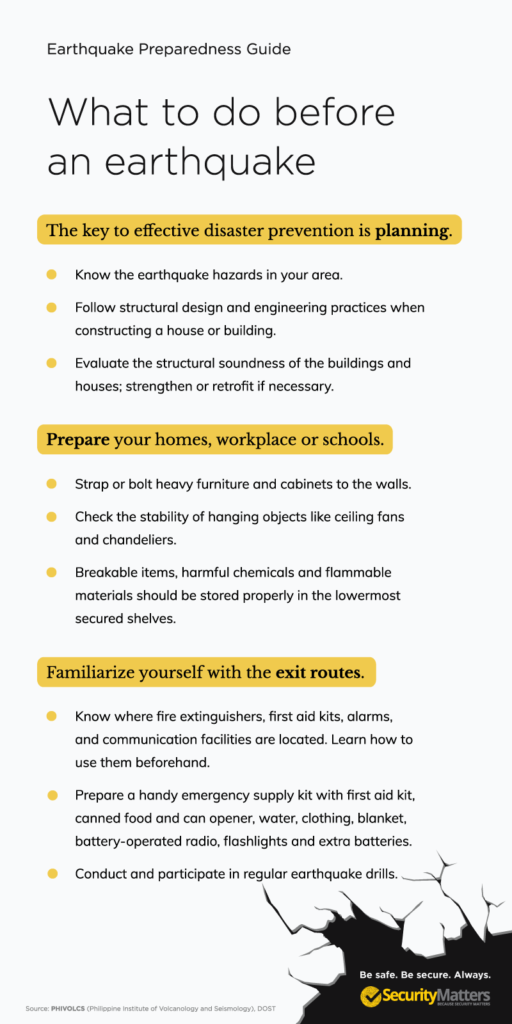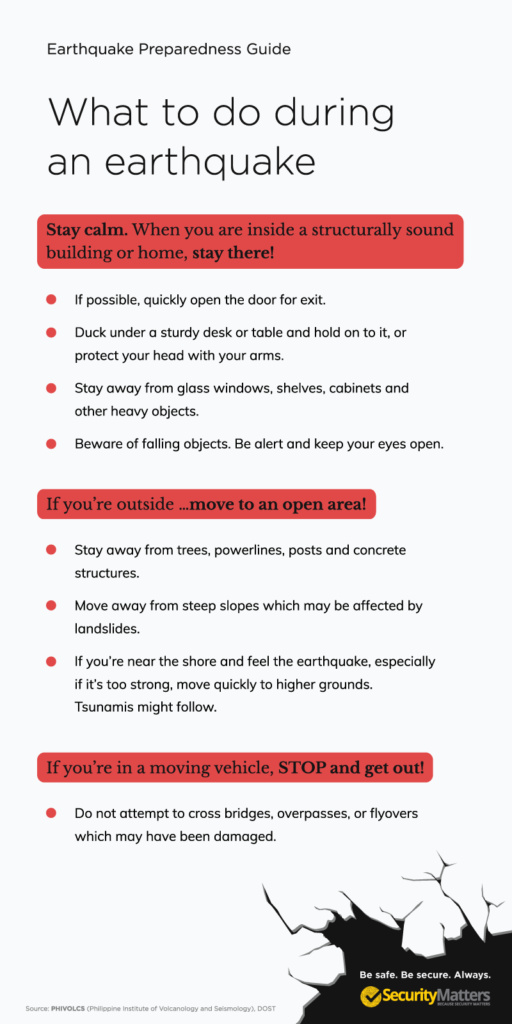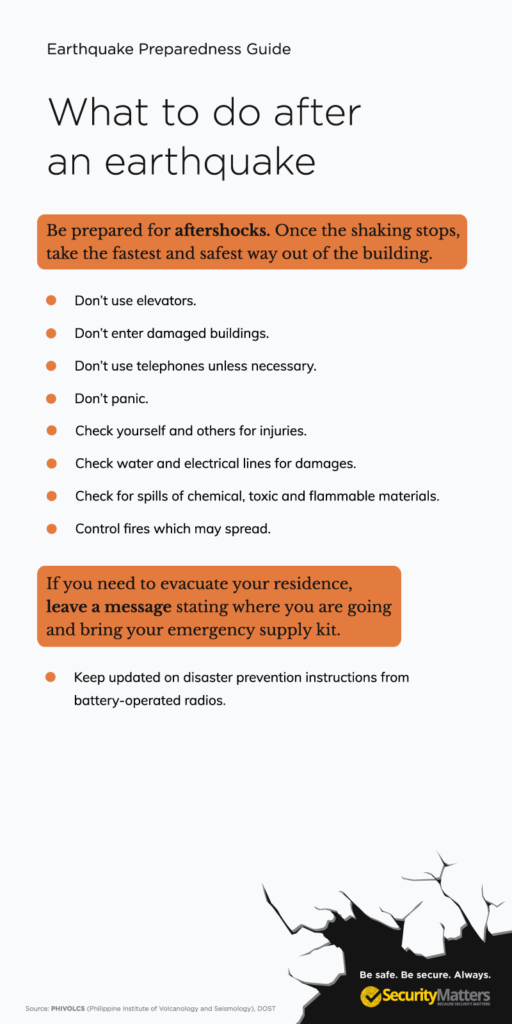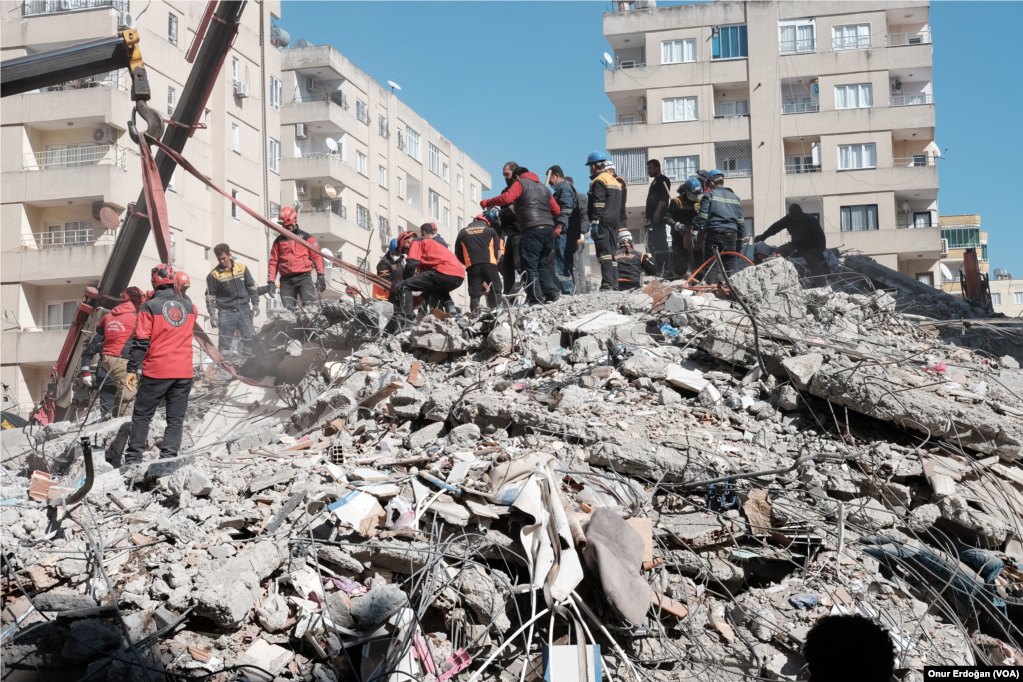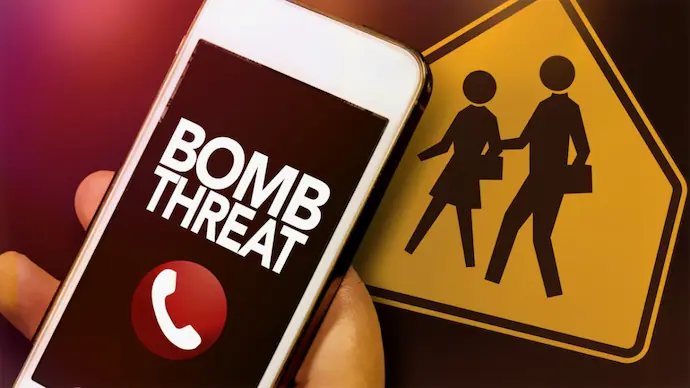Living on a geologically active archipelago like the Philippines means earthquakes are a reality. While they can be terrifying, knowing how to react effectively can significantly improve your safety during and after a tremor. Here are some essential earthquake safety tips applicable at home, work, or outdoors. We’ve also included resources specific to the Philippines.
Preparation is Key: Mitigating Risks Before the Quake
Assemble an Emergency Kit: This vital kit should contain non-perishable food (enough for at least three days), bottled water (one gallon per person per day), a first-aid kit, essential medications, a flashlight, a battery-powered radio, a whistle, and a mobile phone charger. Consider including sturdy shoes, a dust mask, copies of essential documents in a waterproof pouch, and a multi-tool for crucial repairs.
Secure Your Surroundings: Identify and address potential hazards within your living space. Fasten shelves and cabinets securely to walls using L-brackets. Anchor heavy objects like televisions and bookcases to prevent them from falling and causing injury.
Plan Your Escape Route: Discuss escape routes and designated meeting points with your family or roommates. Practice the “Drop, Cover, and Hold On” maneuver (explained below) in a safe location like an interior doorway or a sturdy table. Conduct regular drills, especially with children, to ensure everyone knows what to do in an earthquake.
When the Earth Shakes: Drop, Cover, and Hold On
If You’re Indoors: The safest place to be during an earthquake is indoors, away from windows, outside walls, and hanging objects. Immediately drop to your hands and knees under a sturdy piece of furniture like a desk or table. Cover your head and neck with your arms for protection from falling debris. Hold on firmly to the furniture until the shaking stops.
If You’re Outdoors: Stay away from buildings, power lines, trees, and anything else that could fall on you. Move to an open area and drop to the ground, covering your head and neck with your arms. Avoid seeking shelter under overpasses, power lines, or large trees.
If You’re in a Car: Pull over to the side of the road safely and away from traffic lights, bridges, or overpasses. Stay in your car and turn on the hazard lights. Once the shaking stops, proceed cautiously, avoiding damaged roads and downed power lines.
Remaining Alert and Assessing the Situation After the Earthquake
Check for Injuries: Tend to yourself and others who may be injured. If necessary, administer basic first aid according to your knowledge and the supplies in your kit.
Be Aware of Aftershocks: Smaller tremors will follow the main earthquake. Remain calm and follow the same safety protocols as during the initial quake.
Check for Damage: Look for structural damage to your surroundings. If your home is unsafe, evacuate immediately and find a safe shelter.
Listen to Authorities: Stay informed by following instructions from emergency personnel and reliable news sources. Tune in to local radio stations or check official government websites for updates and advisories.
Here in the Philippines, you can access crucial earthquake preparedness information and emergency assistance from the following organizations:
- National Disaster Risk Reduction and Management Council (NDRRMC): The NDRRMC website (https://ndrrmc.gov.ph/) provides a wealth of information on disaster preparedness, including earthquake safety tips. They can also be reached through their hotline: 911-1406 / 912-2665 / 912-5668
- Philippine Red Cross (PRC): The PRC website (https://redcross.org.ph/) offers earthquake preparedness and response resources. Their hotline number is 143.
Remember:
Don’t Use Elevators: Always use stairs after an earthquake to avoid getting trapped in case of power outages.
Don’t Use Open Flames: Be cautious of gas leaks and avoid using candles or lighters until the danger is clear.
Help Others: If you are safe, assist those injured or needing help evacuating.
Following these earthquake safety tips and staying informed can significantly increase your chances of staying safe during and after a seismic event. Remember, a little preparation can go a long way in protecting yourself and your loved ones.
